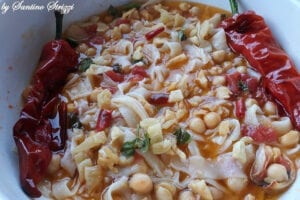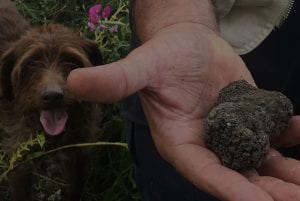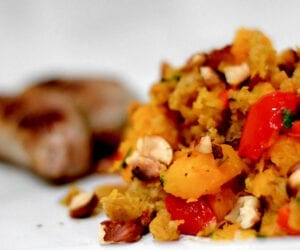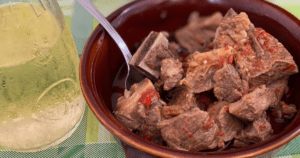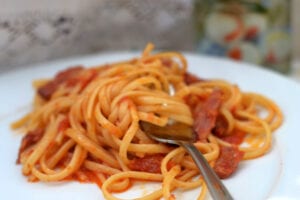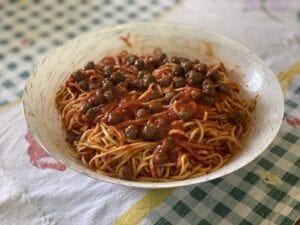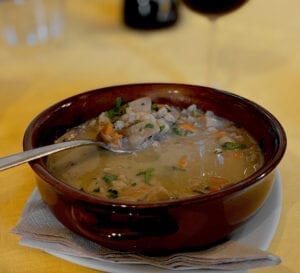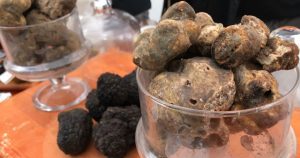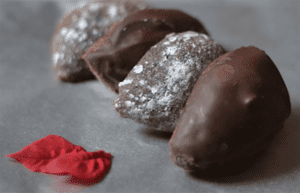
It says Montepulciano d’Abruzzo on the wine bottle’s label and you pop it in your trolley without reading past its title, but how much do you really know about what you’re buying, is it a blend or 100% Montepulciano Nero grape?
After spending the first day of the Montepulciano d’Abruzzo Vendemmia (harvest) up in the hills above Pescara in Spoltore at the Famiglia Febo vineyard, I finally know a lot more about this wine and its grapes, which rather surprisingly when eating one are ‘croccante’ – they crunch!
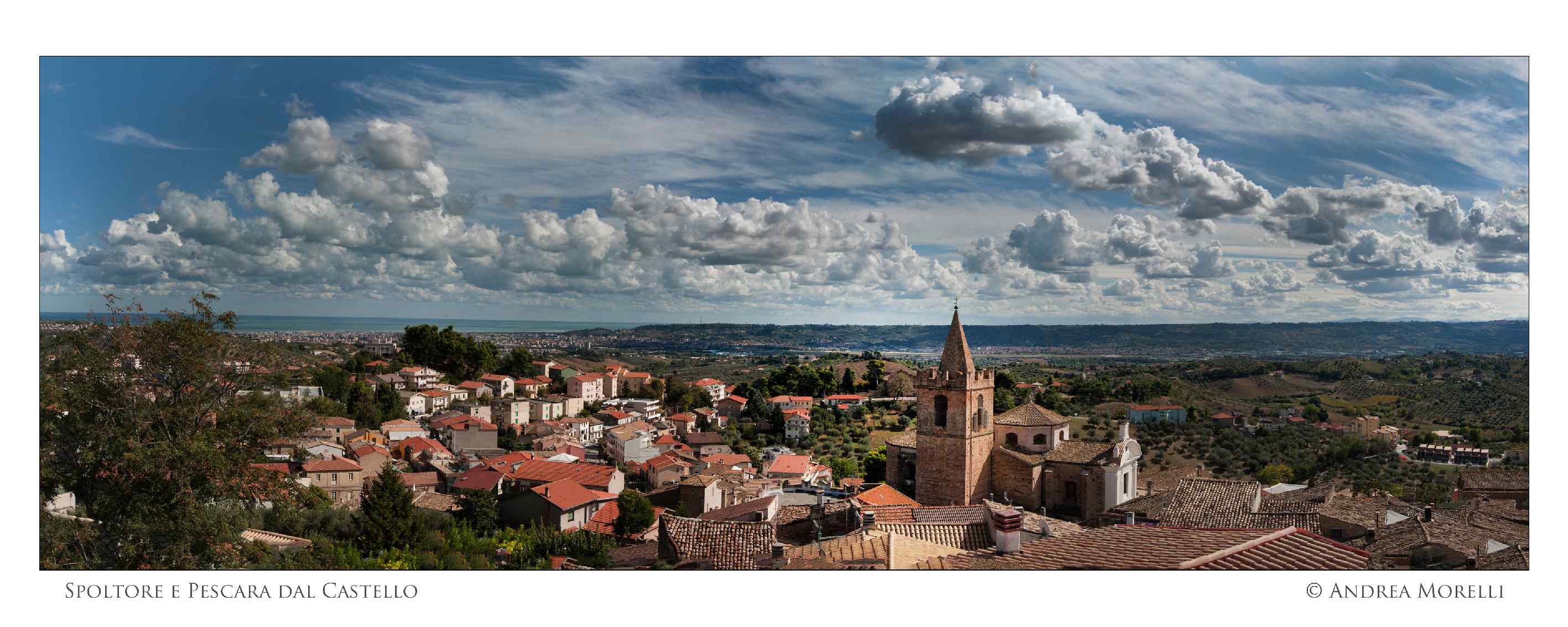
Spoltore is an ancient town named after the spelt (farro) that dates back to neolithic times with a local tomb being found dated to the second half of the third millennium BC and made famous first by its Italic tribe, the Vestini that lived here. No doubt they were enamoured with the rich fertile soil and temperate climate due to its location close to the sea. A walk-in the narrow alleys of its historic centre of the town and you can see the influence of its Romans, Normans the Lombards and French.
Montepulciano d’Abruzzo Pointers
There are ‘3’ wines in Abruzzo that use ‘modern’ Montepulciano d’Abruzzo grapes which are said to have begun life in the Peligna Valley. One easy way to recognise whether it comes from a young or an old vine is the amount of tannin it possesses, it’s this that stains your teeth and lips! ‘More’ increases the likelihood it’s from a mature vine, using the traditional ‘Pergola’. This trellis-like system allows the leaves shade & buffers the young grapes from what can be scorching summer days in Abruzzo, with plenty of height for the air to circulate and reduce the chances of mildew.
Surprisingly to most people your bottle of Montepulciano d’Abruzzo probably does not contain just one grape type, but it will conform to the serious regulations concerning the dilution of the Montepulciano Nero grape. From its 3 main wines, comes 5 sub-zones which is why their flavours are so different. Each of them remains full of Abruzzo’s most stunning grape, but to create a more complex, full-bodied flavour and meet its winegrower’ and their market’s taste another grape is permitted to be added to give a rich fruit or savory finish to most wines! Here’s the breakdown and what to expect from a ‘local’ bottle!
Montepulciano d’Abruzzo DOC
- 85% minimum Montepulciano Nero grape, up to 15% Sangiovese is permitted
- Each of Abruzzo’s four provinces produce Montepulciano d’Abruzzo, a full-bodied wine that is reminiscent of young blackberry, rich red fruits and spices with an aroma of licorice.
Montepulciano d’Abruzzo Terre di Casauria DOC
- 100% Montepulciano Nero grape
- This zone is made up of 18 comunes in the province of Pescara, it gets its name from the town that started this 100% DOC, Tocco Casauria
- Colour, Flavour & Nose – Ruby red with shades of purple, garnet as aged,intense and ethereal with a hint of red fruit. It has a full, robust taste that is both harmonious and slightly tannic
- Aged – 18 months, 9 of which should be in a barrel. If a reserve is must have aged for 24 months in a barrel and 9 months in a bottle
- Alcohol Content – 13%
Montepulciano d’Abruzzo Alto Tirino DOC
- 85% Montepulciano Nero grape, 15% ‘black grapes’ which have been cultivated in Abruzzo
- This slightly spicy wine is produced in a basin L’Aquila on the south eastern Gran Sasso & Sirente range and within the the comunes of Capestrano, Ofena and Villa S. Lucia.
- Colour, Flavour & Nose – A rub red wine, young cherries,blackberries in flavour with a sightly spicy harmonious finish
- Alcohol Content – 12-12.5%
Montepulciano d’Abruzzo Teate DOC
- 90% Montepulciano Nero grape, 10% ‘black grapes’ which have been cultivated in Abruzzo
- Location – This zone is Chieti based and stretches from the coast inland to the Foro and Tigno rivers and foothills of the Maiella
- Colour, Flavour & Nose – Intense you berry red fruits, spice and a velvet finish
- Alcohol Content – 12.5-13%
Montepulciano d’Abruzzo Terre dei Peligni DOC
- 90% Montepulciano Nero grape, 10% ‘black grapes’ which have been cultivated in Abruzzo
- Location – This zone stretches into the foothills of the Apennines of Sulmona and the 11 comunes that surround it
- Colour, Flavour & Nose – Harmonious wines that are rub red with slight purple hues, delicate berries and herbal aroma
- Alcohol Content – 12.5-13%
Montepulciano d’Abruzzo Terre dei Vestini DOC
- 90% Montepulciano d’Abruzzo, 10% ‘black grapes’ which have been cultivated in Abruzzo
- Location – This zone is is created by wineries within Pescara’s foothills including Spoltore and Loreto Aprutino
- Colour, Flavour & Nose – Ruby red with violet hues, fresh young berries, herbal/vegetal aroma with a velvety finish
- Aged 24 months A least 9 months is wood, 3 months in bottles
- Alcohol Content – 12.5-13%
The Montepulciano d’Abruzzo DOC Sub-zones Map
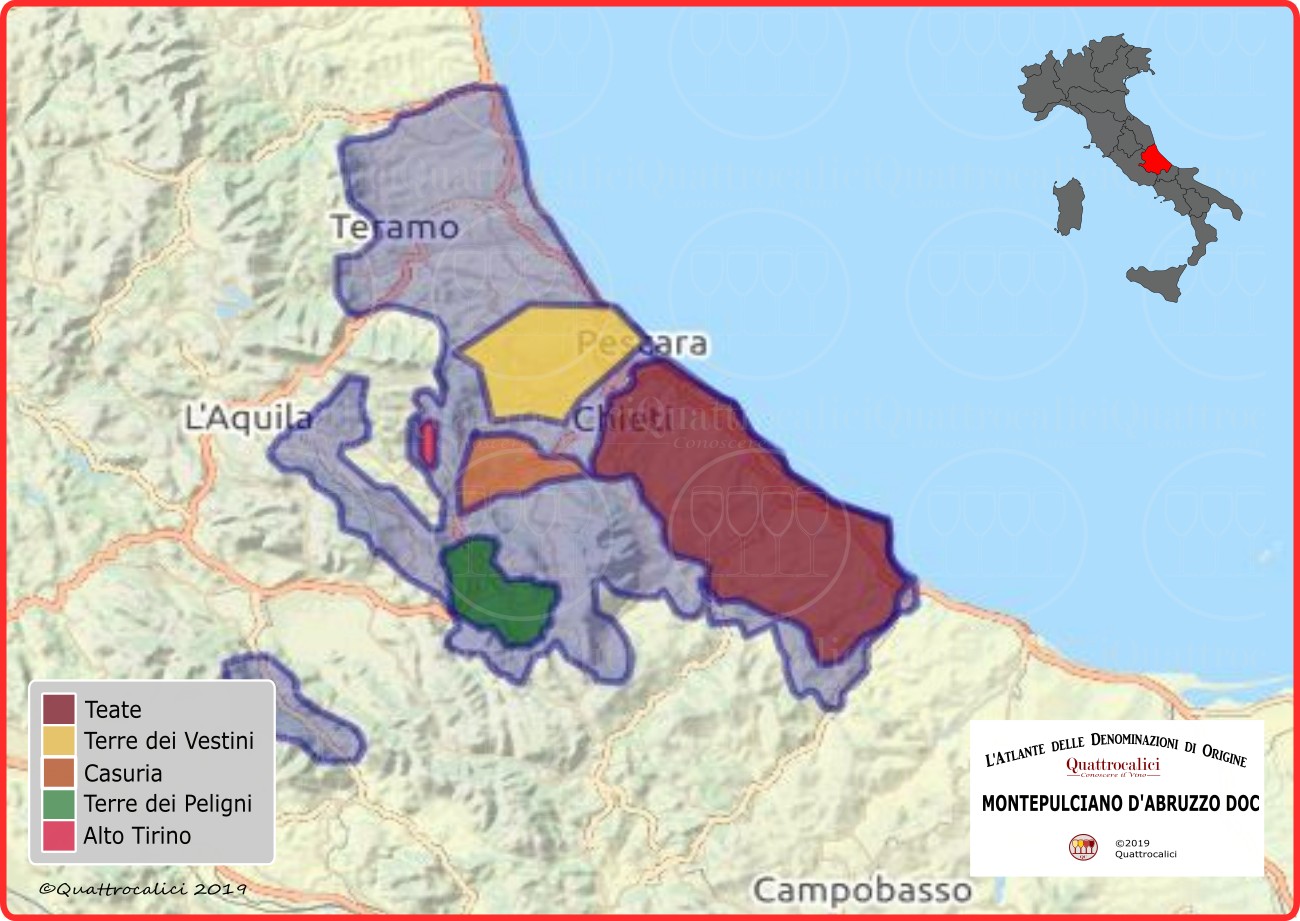
Montepulciano d’Abruzzo Colline Teramane DOCG
- 90% Montepulciano Nero grape, up to 10% Sangiovese is permitted.
- Location – This DOCG Montepulciano d’Abruzzo is nicknamed the ‘Jewel in the Crown’. The area that produces this wine is named after Teramo’s undulating hills and stretches from the Adriatic coast up to meet the Gran Sasso National Park covering 30 comuni. The soil here is not just the standard clay of Abruzzo but a mix of limestone washed down from the mountains.
- Aged – For a minimum of 2 years, one year in oak, and 6 months in bottles before it is sold. These wines are described as earthy and robust with a velvet finish.
- Alcohol Volume – 12%
Controguerra Rosso DOC
- 70% minimum Montepulciano Nero grape, Merlot, Cabernet, Ciliegiolo or Pinot Noir are permitted to be added to the blend
- Location – It’s produced from the top tip of coastal northern Teramo down to just past the seaside town of Alba Adriatica and inland, halfway to Ascoli Piceno
- Colour, Flavour & Nose – An intense ruby red wine that hints of ripe fruit, blackberries, red currants, withered flowers and delicate tobacco without tannin
How to Pair a Montepulciano d’Abruzzo
- A young Montepulciano d’Abruzzo DOC is perfectly paired with Campotosto Mortadella, Vasto Ventricinia, grilled pork, arrosticini or lamb, truffle, pasta and of course its most famous pairing – pizza!
- A reserve Montepulciano d’Abruzzo DOC is best paired with hearty red meats and game that has been roasted, boiled or braised, a rich bone broth and mature cheeses.
The Famiglia Febo – Vines that Connect the Past, Present and Future
Davide and Laura Febo made the courageous choice to return to Spoltore and grow their ancestral family winery business, Davide had a background as a lawyer, Laura, a translator who works in publishing. They began to learn everything there is to know about viniculture, studying up in Teramo, and from the most distinguished wine figures of the region. Their aim was to make sure their wines would develop just as their own knowledge did. They cite their influences as the superb Valentini and Praesidium wineries. They had their first vintage in 2018 that this year received high marks and inclusion in the Vinibuoni d’Italia 2021 guide.
The EU invested in their business, helping them buy the latest machinery to ensure they could create and compete with the best. Their diffuso vines are the oldest north-facing grapes located below the family farmhouse to their newest vines growing healthily in part of the town that was formerly used for grazing but had been abandoned. Their white grapes are grown further south in Chieti; these vineyards were inherited from their mother’s side. Her father moved from being a dairy farmer to turning 3 hectares of his pasture lands into vineyards and becoming a member of the local wine cooperative.















